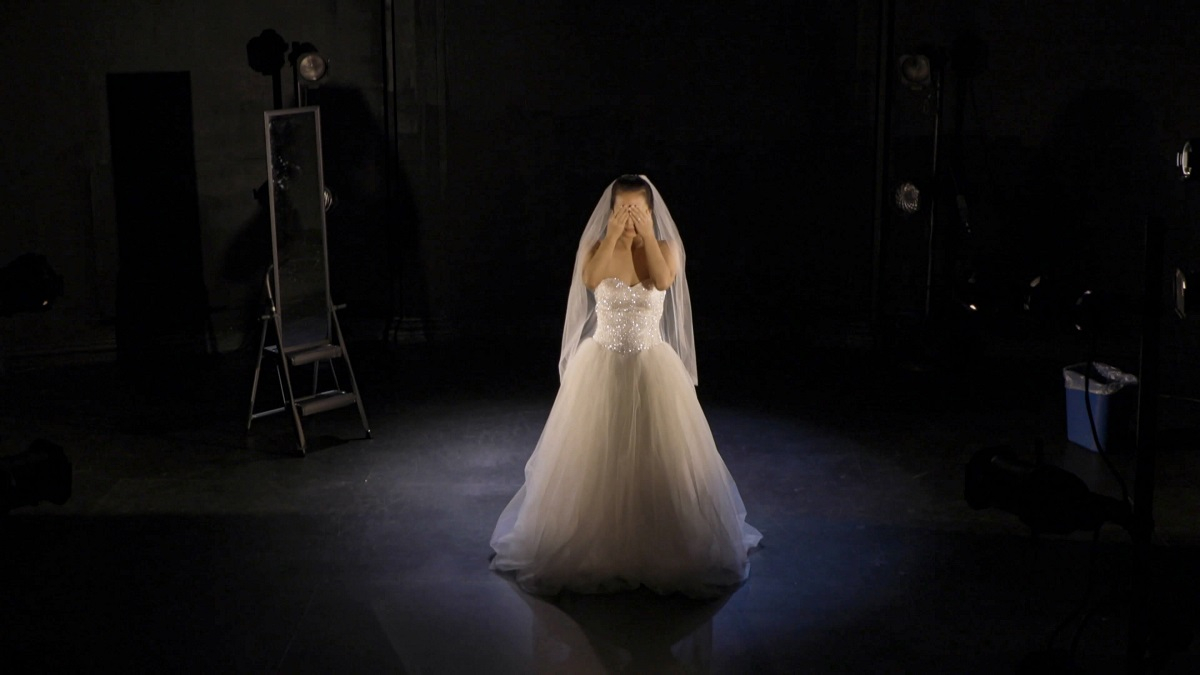
In One Ear
Comprising: Hairy Black Hole, written by Christina Liang, directed by Philip Estrera; All Men Are Clowns, written and directed by C. Bain; Ricki Martin, written and directed by Ashley Grombol; and I Had a Dream, composed by Naeemah Maddox, directed by Philip Estrera
Presented by Hunger and Thirst Theatre via www.hungerandthirsttheatre.com
March 9-21, 2021
As the theater community continues to seek ways to create and share new work during the pandemic, Hunger and Thirst Theatre has debuted its free digital project In One Ear, which describes itself as an artistic game of Telephone. In One Ear was created by four artists from four different disciplines. The first artist was given the quote “For silence is a sounding thing, / To one who listens hungrily," from a poem by writer, artist, and teacher Gwendolyn Bennett (1902-1981), for inspiration and allotted two weeks for composition. The second artist then received the first's script as his inspiration and another two weeks to create, and so on, culminating in all four pieces being filmed at the West End Theater. The project's page on Hunger and Thirst's website includes a brief video describing this process along with the short works themselves (ranging from seven and a half to thirteen and a half minutes), information about the artists, production credits, and behind the scenes content. Varied in their genres and tone but united in showcasing these artists' skill and creativity, the works that this artistic experiment conjures forth from the sounding silence are well worth checking out.
The first piece, Hairy Black Hole, written and performed by actress and writer Christina Liang, is the most traditionally theatrical piece, a monologue delivered by a bride to a silent videographer on her wedding day. The bride's anxiety on her big day doesn't improve as her fiancé, Harry, fails to text her back, leading to some soul searching and some questioning of the whole institution. Liang's performance invites both pathos and laughs and includes such ironic details as pointing out that white is the color of mourning in many cultures while in full bridal attire and talking about the paper anniversary while holding some toilet paper. Viewers of the next segment, All Men Are Clowns, are free to identify its mute male figure, played by multidisciplinary artist and the piece's writer and director C. Bain, with Harry, or with people like him, or with, as suggested by the title, all men, or none of the above. This man starts out appearing upset himself, but the clown nose that appears after the title sequence signals a shift away from realism (and puts a different spin on the formal wear that we later see is paired with black shorts). From the character's reacting to audio of a pickup artist channel to a phallic balloon to an impressive animated sequence, All Men's imagery constellates masculinity, fertility, and death, and does so with humor fitting C. Bain's channeling of a melancholy silent film clown.
The third segment, Ricki Martin, moves us even further into surreality. Created entirely in stop motion animation by actor, creator, and baking blogger Ashley Grombol, Ricki features a pair of protagonists, Ricki and Martin, who resemble red balls (or clown noises?) with feet and eyes (judging by Wikipedia, a "weepul" may be a point of comparison). Starting out on some benches watching a girl and a fluffy dog go by, these two creatures, who "speak" in chiming thought bubbles, soon set to what one might see as their version of making lemonade from lemons. Their transformative powers set in motion a weird, whimsical series of events that climaxes in the visually clever assembly of a layered (wedding?) cake and ends on a slightly darker but amiably humorous joke. Bringing In One Ear to a strong conclusion is I Had a Dream, a musical performance by singer-songwriter, composer, and multi-instrumentalist Naeemah Z. Maddox. Sung over a lone Stratocaster and accompanied by occasional video effects and cuts that change both points of view and clothing, the song features an embattled speaker who refuses to forget her dream despite the past tense of the song's title.
All four of the works that make up In One Ear could satisfyingly be watched in isolation, but together, they invite viewers individually to fill in connections and resonances (one might, for example, follow the thread of "dreams" through all four pieces), which renders these interpretations further links on the artistic telephone chain, as it were. As a kind of touchstone, the segments return the camera's gaze to the distinctive light fixture suspended from the West End Theater's ceiling, evoking the in-person theater whose absence has generated these virtual performances. While a return to such in-person performance spaces may be at least on the horizon, until then, In One Ear joins the inventive, innovative, entertaining work that continues to be produced within the world of theater. - Leah Richards and John R. Ziegler
